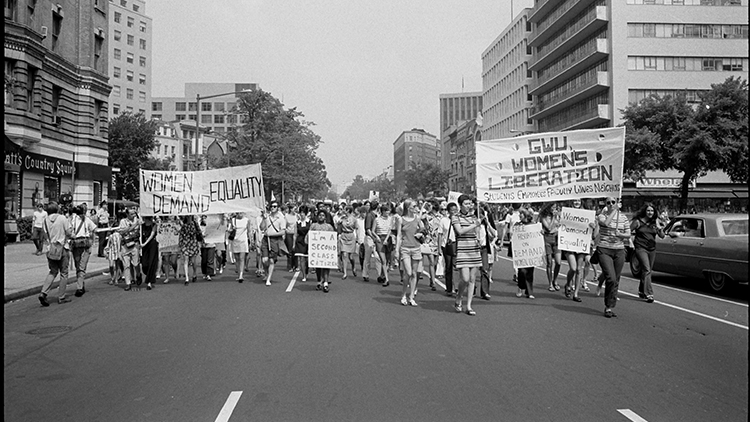
In 1972, Congress passed an amendment [a change or correction] to the Constitution. It guaranteed that “equality of rights under the law shall not be denied or abridged by the United States or by any state on account of sex.” It was known as the Equal Rights Amendment (the ERA). It meant that treating men and women equally would be permanently written into our Constitution. Even though Congress approved of it, the ERA never became part of our Constitution. Why not?
After being approved by Congress, an amendment must be ratified [given formal consent] by the states. This meant that 3/4, or 38 of 50, of our states needed to vote for it within seven years of its passage. In its first year, 22 states voted to ratify the ERA. Then opposition to the ERA began to organize.
Opponents of the ERA thought it would change society too much too quickly. They pressured states not to ratify the ERA. Even after the deadline to ratify the ERA was extended to 1982, only 35 states ratified the ERA. It did not become part of the Constitution.
In the decades since the ERA, women have continued to work for equality. They have made great strides. There is a law that says school programs must treat boys and girls equally. There is a law that says women and men must be paid the same for the same work. However, there are still cases of sex discrimination. The average pay of women still lags behind men, and some worry that women aren’t viewed as equal to men.
The ERA has been reintroduced at every session of Congress since 1982. One hundred thousand people showed up to march in support of the ERA in 1978. Well, millions showed up for this year’s Women’s March in January. This shows what a powerful political force supporters of women’s rights are today. Some have suggested this might be the time to finally pass the Equal Rights Amendment. Others wonder if, with all the progress women have made, it is even necessary.
Supreme Court Justice Ruth Bader Ginsburg has argued that even though many of the aims of the ERA have been achieved, “legislation can be repealed, it can be altered. So I would like my granddaughters, when they pick up the Constitution, to see that notion – that women and men are persons of equal stature – I’d like to them to see that is a basic principle of our society.”
What Do You Think? Do we need an Equal Rights Amendment to ensure women have the same rights as men?
Photo Credit: Library of Congress Prints and Photographs Division [LC-DIG-ppmsca-03425]



